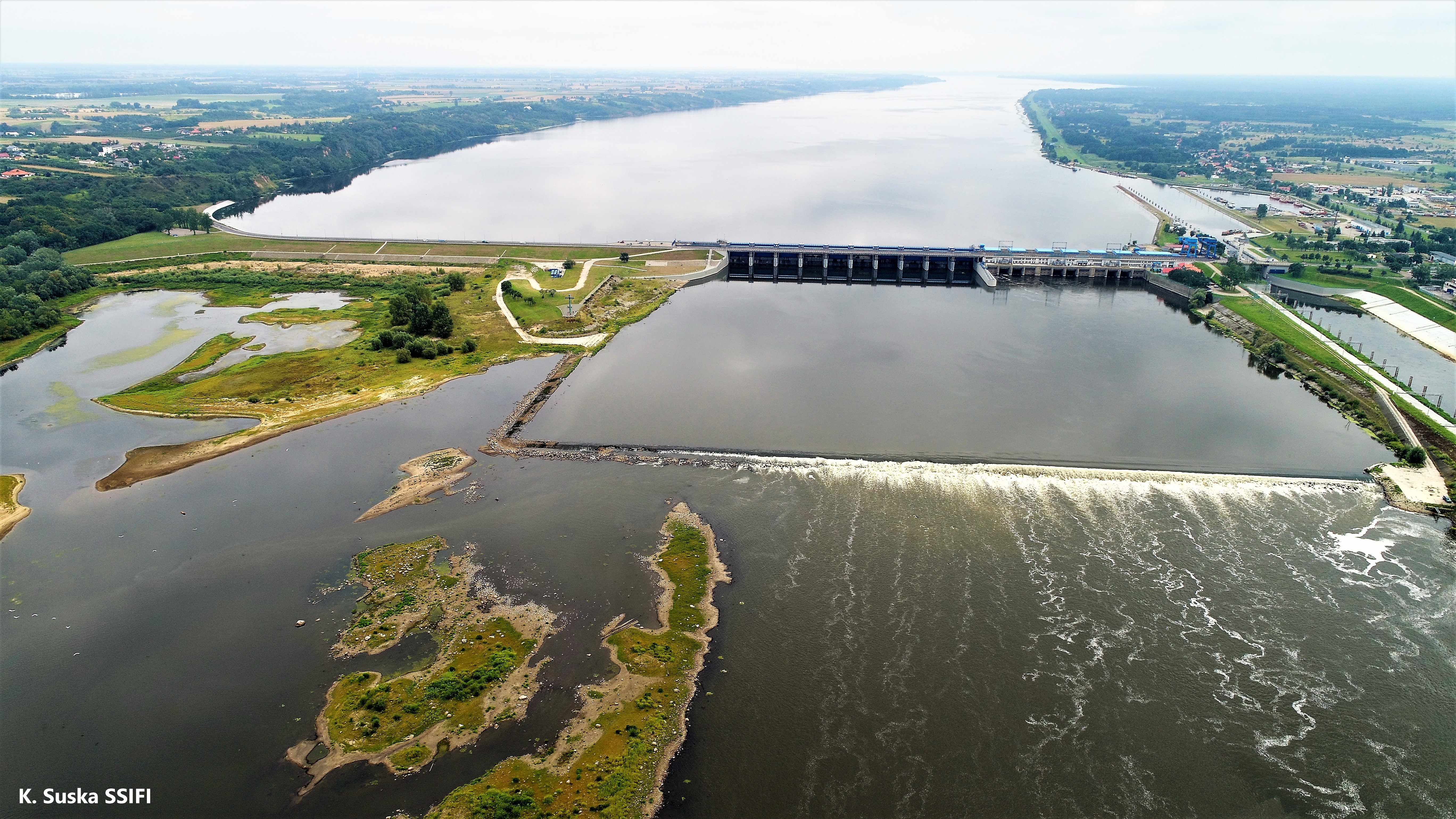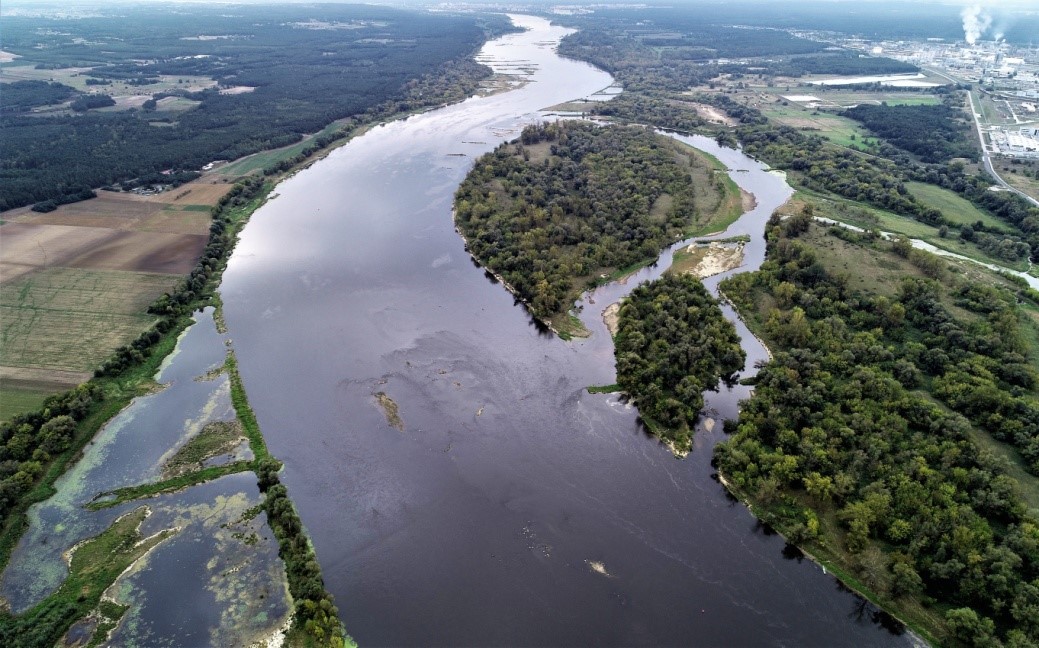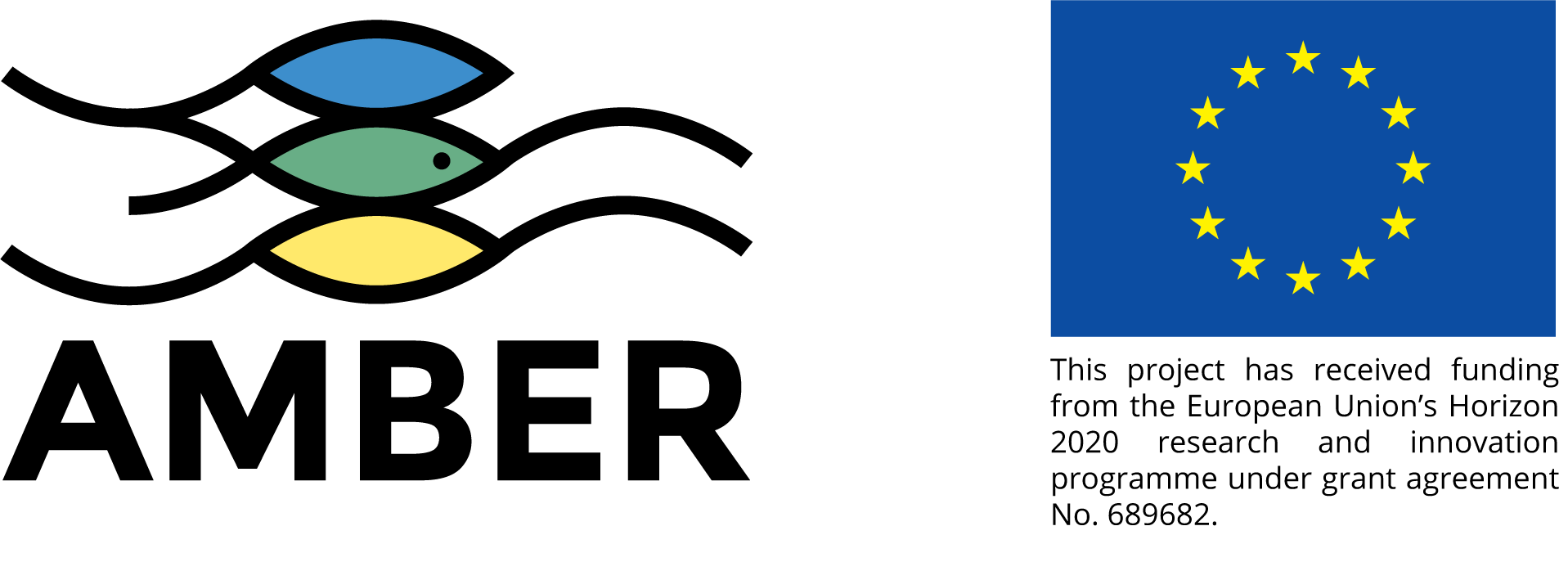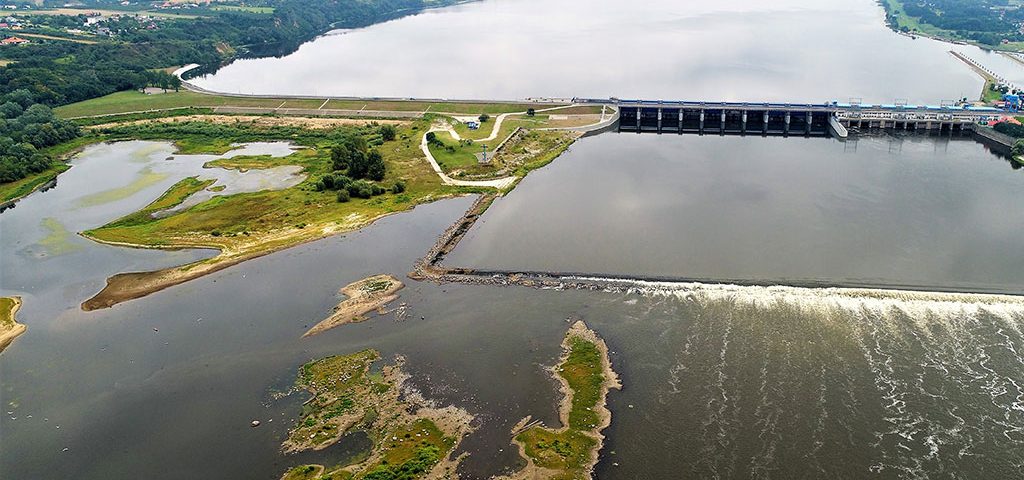Case Study Number: 5
Dam name: Włocławek Dam
River name: Vistula
River extension: 1,020Km
RIVER surface area: 194,000 Km2
Built date: 1969
Hydropower concession: 1956
Status: Active, concession to 2075
AMBER TOOLS: MesoHABSIM (D2.6), Fish Habitat Modelling and Mapping (D2.1), Sediment Dynamics Modelling (D2.4), Drone Survey (D2.4), Molecular Toolkit (D2.5)
River name: Vistula
River extension: 1,020Km
RIVER surface area: 194,000 Km2
Built date: 1969
Hydropower concession: 1956
Status: Active, concession to 2075
AMBER TOOLS: MesoHABSIM (D2.6), Fish Habitat Modelling and Mapping (D2.1), Sediment Dynamics Modelling (D2.4), Drone Survey (D2.4), Molecular Toolkit (D2.5)
THE NEED
The River Vistula is one of the last large European rives with substantial stretches of its lower and middle course preserved in close to natural or slightly modified morphological conditions.
It was historically a main migration path in Poland for several diadromous fish species: sea trout (Salmo trutta m. trutta L.), Atlantic salmon (Salmo salar L.), Atlantic sturgeon (Acipenser oxyrinchus Mitchill 1815), and migratory populations vimba bream (Vimba vimba (L.), as well as river lamprey (Lampetra fluviatilis L.). In the past, these species reached the tributaries of the upper Vistula - Dunajec, Raba, Soła, Skawa, Wisłok, San and the tributaries of lower and middle Vistula River: Drwęca, Brda, Wierzyca, Bug and Narew, where spawning took place.
The Włocławek dam had a crucial impact on migratory fish species in the Vistula river system Populations of sea trout, vimba and potamodromous species, like asp and barbell, declined seriously after dam construction, while sturgeon and Atlantic salmon were extinct in the Vistula river catchment a few decades earlier due to overfishing and water pollution. Since then, large reintroduction programmes have attempted to rehabilitate the extinct and endangered diadromous species, with some success so far.
It was historically a main migration path in Poland for several diadromous fish species: sea trout (Salmo trutta m. trutta L.), Atlantic salmon (Salmo salar L.), Atlantic sturgeon (Acipenser oxyrinchus Mitchill 1815), and migratory populations vimba bream (Vimba vimba (L.), as well as river lamprey (Lampetra fluviatilis L.). In the past, these species reached the tributaries of the upper Vistula - Dunajec, Raba, Soła, Skawa, Wisłok, San and the tributaries of lower and middle Vistula River: Drwęca, Brda, Wierzyca, Bug and Narew, where spawning took place.
The Włocławek dam had a crucial impact on migratory fish species in the Vistula river system Populations of sea trout, vimba and potamodromous species, like asp and barbell, declined seriously after dam construction, while sturgeon and Atlantic salmon were extinct in the Vistula river catchment a few decades earlier due to overfishing and water pollution. Since then, large reintroduction programmes have attempted to rehabilitate the extinct and endangered diadromous species, with some success so far.
Problems
- Reduction in habitat
- River fragmentation
- Reduction in edemic species populations

Map of the River Vistula and its main tributaries. Włocławek Dam is marked (red arrow), as well as other barriers (impassable – red dots, passable – green dots).
WHAT WE DID
A new dam is being planned downstream of the Włocławek dam, aimed at hydraulically supporting the existing dam and stopping bottom erosion. The ecological effects of Włocławek dam opening to fish migration and a possible new-build barrier impact were studied and modelled within this case study. Tools developed by AMBER were applied as decision support for management of the middle River Vistula stretch, crucial for migratory fish restoration in the whole catchment.
This study carried out fish habitat availability studies conducted below and upstream of the Włocławek dam combined with measurements of physical conditions, studied the effect of fish migration through the Włocławek Dam’s newly reconstructed fish passage, modelled the ecological effects of Włocławek dam opening to fish migration and effects of probable new-build barrier and used tools developed by AMBER (aerial imaging, habitat maps, habitat suitability models, e–DNA study) as decision support for management of the middle Vistula River stretch and for migratory fish restoration in the whole catchment.
This study carried out fish habitat availability studies conducted below and upstream of the Włocławek dam combined with measurements of physical conditions, studied the effect of fish migration through the Włocławek Dam’s newly reconstructed fish passage, modelled the ecological effects of Włocławek dam opening to fish migration and effects of probable new-build barrier and used tools developed by AMBER (aerial imaging, habitat maps, habitat suitability models, e–DNA study) as decision support for management of the middle Vistula River stretch and for migratory fish restoration in the whole catchment.
Tools
- MesoHABSIM (D2.6)
- Fish Habitat Modelling and Mapping (D2.1)
- Sediment Dynamics Modelling (D2.4)
- Drone Survey (D2.4)
- Molecular Toolkit (D2.5)

The Włocławek Dam on the River Vistula. The new fishpass marked with an arrow and the auxiliary dam.
NOW WHAT
It is clear that the large impoundment beyond Włocławek dam has a significant impact on up and downstream habitats. The major mechanism is the modification of habitat structure, which leads to alteration of fish communities from riverine to pond preferring species. This is observed up and downstream of the dam. Our fish observations confirm this conclusion as the fish community structure strongly resembles the habitat structure of the impounded area. However, it needs to be remembered that the electrofishing sample was not supported by net gear samples and therefore the deep and fast-flowing areas are underrepresented in the data. Still, the resemblance is too high for this shortcoming to completely undermine the conclusion.
Alternatives for improving fish passage through adaptive management include a universal fishpass on the left side of the power plant; the use of the navigation lock as a fish pass; installation of a lift for fish; use of the Zuzanka Channel as a bypass of the Włocławek dam.
Alternatives for improving fish passage through adaptive management include a universal fishpass on the left side of the power plant; the use of the navigation lock as a fish pass; installation of a lift for fish; use of the Zuzanka Channel as a bypass of the Włocławek dam.

The River Vistula – seminatural stretch at Bógpomóż Stary – 14km below the Włocławek Dam.
WHO WAS INVOLVED
The Włocławek Dam case study was carried out by AMBER Partner SSIFI (Stanisław Sakowicz Inland Fisheries Institute, Poland).
FURTHER READING
References
Bartel, R. 1993. Present situation of the Vistula sea trout. Arch.Ryb.Pol. 1: 101-203.
Bain, M.B. & Meixler, M.M. (2008). A Target Fish Community to Guide River Restoration. River Research and Applications 24(4): 453 – 458. doi: 10.1002/rra.1065.
Bartel, R. 2002. Diadromous fish, their commercial importance, and restoration programs for these species. Supplement of Acta Hydrobiologica 3: 37-55 (in Polish).
Bartel, R., Wiśniewolski, W. & Prus, P. 2007. Impact of the Wloclawek dam on migratory fish in the Vistula River. Archives of Polish Fisheries 15: 141-156.
Biegała, L. 1972. Fishway at the barrage in Włocławek - Gospodarka Wodna 5: 192-194 (in Polish)
Bontemps, S. 1977. Fish migration through the fishway at the damn on the Vistula River. Gospodarka Rybacka 29: 18-19 (in Polish).
Capra, H, Breil, P. & Souchon Y. 1995. A new tool to interpret magnitude and duration of fish habitat variations. Regulated Rivers: Research & Management 10(2-4): 281-289. https://doi.org/10.1002/rrr.3450100221.
Castro-Santos, T., Haro, A. & Walk, S. 1996. A passive integrated transponder (PIT) tag system for monitoring fishways. Fisheries Research 28: 253-262.
Dębowski, P. 2018c. The largest Baltic population of sea trout (Salmo trutta L.): its decline, restoration attempts, and current status. Fisheries & Aquatic Life 26: 81-100.
Dębowski, P. 2016. Fish passage through the Włocławek dam fishway in 2015. Komunikaty Rybackie 153: 1-7 (in Polish).
Dębowski, P. 2017. Fish passage through the Włocławek dam fishway in 2016. Komunikaty Rybackie 157: 1-6 (in Polish).
Dębowski, P. 2018a. Passage of vimba, Vimba vimba (L.), through the fish pass on the Włocławek dam, Vistula. Roczniki Naukowe PZW 31: 57-71(in Polish).
Dębowski, P. 2018b. Fish passage through the Włocławek dam fishway in 2017 and preliminary analysis of fish runs in 2015-17. Komunikaty Rybackie 163: 7-12 (in Polish).
Gerten, D., Schaphoff, S., Haberlandt, U., Lucht, W. & Sitch, S. 2004. Terrestrial vegetation and water balance–Hydrological evaluation of a dynamic global vegetation model. Journal of Hydrology 286(1–4): 249–270.
Hagemann, S. & Dümenil, L. 2001. Validation of the hydrological cycle of ECMWF and NCEP reanalyses using the MPI hydrological discharge model. Journal of Geophysical Research 106: 1503–1510. doi:10.1029/2000JD900568.
Hanasaki, N., Kanae, S., Oki, T., Masuda, K., Motoya, K., Shirakawa, N., Shen, Y. & Tanaka, K. 2008. An integrated model for the assessment of global water resources – Part 1: Model description and input meteorological forcing. Hydrology and Earth System Sciences 12: 1007–1025. doi.org/10.5194/hess-12-1007-2008.
Hanasaki, N., Yoshikawa, S., Pokhrel, Y. & Kanae, S. 2018. A global hydrological simulation to specify the sources of water used by humans. Hydrology and Earth System Sciences 22: 789–817. doi.org/10.5194/hess-22-789-2018.
Kołder, W. 1958. Stocking of the upper Vistula River system with salmon and sea trout from 1879 to 1954. RNR 73-B-2: 215-267(in Polish).
Linnik, V., Malinin, L.K., Woźniewski, M., Sych, R. & Dębowski, P. 1998. Movements of adult sea trout Salmo trutta L. in the tailrace of a low-head damat Wloclawek hydroelectric station on the Vistula River, Poland. Hydrobiologia 371/372: 335-337.
Morawska, B. 1968. Fish and fishery in Vistula River near Włocławek. Zesz.Nauk.SGGW, Zootechnika 7, Rybactwo 3: 23-56 (in Polish).
Moriasi, D. N., Arnold, J. G., Van Liew, M. W., Bingner, R. L., Harmel, R. D. & Veith, T. L. 2007. Model evaluation guidelines for systematic quantification of accuracy in watershed simulations. Transactions of the ASABE, 50(3): 885-900.
Niemi, G. J., Devore, P., Detenbeck, P., Taylor, N., Lima, D., Pastor, A. J., Yoint, J. D. & Naiman, R. J. 1990. Overview of case studies on recovery of aquatic systems from disturbance. Environmental Management 14: 571–587.
Novak, M. A. & Bode, R.W. 1992. Percent Model Affinity: A New Measure of Macroinvertebrate Community Composition. Journal of the North American Benthological Society 11(1): 80-85.
Oleson K., Dai Y., Bonan G. B., Bosilovichm M., Dickinson R., Dirmeyer P., … Zeng, X. 2004. Technical Description of the Community Land Model (CLM) (No. NCAR/TN-461+STR). University Corporation for Atmospheric Research. doi:10.5065/D6N877R0.
Parasiewicz, P. & Adamczyk, M. 2014. Mesohabsim Simulation Model for riparian ichthyofauna habitats in consideration of stock conservation and fisheries management requirements. Komunikaty Rybackie 5 (142): 5-10.
Parasiewicz, P. 2007a. The MesoHABSIM model revisited. River Research and Application 23: 893–903.
Parasiewicz, P. 2007b. Using MesoHABSIM to develop reference habitat template and ecological management scenarios. River Research and Application 23: 924–932.
Parasiewicz, P. 2008a. Habitat time-series analysis to define flow-augmentation strategy for the Quinebaug River, Connecticut and Massachusetts, USA. River Research and Application 24: 439–452. doi: 10.1002/rra.1066.
Parasiewicz, P. 2008b. Application of MesoHABSIM and target fish community approaches for selecting restoration measures of the Quinebaug River, Connecticut and Massachusetts, USA. River Research and Application 24: 459–471. doi: 10.1002/rra.1064.
Parasiewicz, P., Ryan, K., Vezza, P., Comoglio, C., Ballestero, T. & Rogers, J.N. 2012. Use of quantitative habitat models for establishing performance metrics in river restoration planning. Ecohydrology 6(4): 668–678. doi:10.1002/eco.1350.
Poff, N.L. & Ward, J. V. 1990. Physical habitat template of lotic systems: Recovery in the context of historical pattern of spatiotemporal heterogeneity. Environmental Management 14(5): 629-645. doi: 10.1007/BF02394714.
Prentice, E.F., Flagg, T.A., McCutcheon, C.A. & Brastow, D.F. 1990. PIT-tag monitoring systems for hydroelectric dams and fish hatcheries. American Fisheries Society Symposium 7: 323-334.
Szupryczyński, J. 1986. Influence of the Włocławek reservoir on the geographical environment (summary), In: Szupryczyński J., ed., The Włocławek Reservoir – Some problems of physical geography. Dokumentacja Geograficzna. Instytut Geografii i Przestrzennego Zagospodarowania PAN, 7-24 (in Polish).
van Beek, L.P.H., Wada, Y. & Bierkens, M.F.P. 2011. Global monthly water stress: 1. Water balance and water availability. Water Resources Research 47: 1-25. doi.org/10.1029/2010WR009791.
van Vuuren, D.P., Edmonds, J., Kainuma, M. et al. 2011. The representative concentration pathways: an overview. Climatic Change 109(5). doi.org/10.1007/s10584-011-0148-z.
Vörösmarty, C.J., Federer, C.A. & Schloss, A. 1998. Potential evaporation functions compared on US watersheds: possible implications for global-scale water balance and terrestrial ecosystem modeling. Journal of Hydrology 207: 147–169. doi:10.1016/S0022-1694(98)00109-7.
Wiśniewolski, W. 1987. Commercial fish catches in the Vistula, Oder, and Warta rivers from 1953 to 1978. Roczniki Nauk Rolniczych, Seria H 101: 71-114 (in Polish).
Wiśniewolski, W. 1985. Population of vimba in multiannual fishery statistics. Gosp.Ryb.: 3-6 (in Polish).
Wiśniewolski, W. 2020. Przywrócenie migracji ryb na zaporze Zbiornika Włocławskiego warunkiem powodzenia restytucji ryb wędrownych w systemie środkowej i górnej Wisły. Konferencja Wylęgarnia 2020 (referat in Polish).
Wiśniewolski, W., Augustyn, L., Bartel, R., Depowski, R., Dębowski, P., Klich, M., Kolman, R. & Witkowski, A. 2004. Polish river continuity and restoring migratory fish. WWF Polska, Warszawa, 1-42 (in Polish).
Woodget, A. S., Austrums, R., Maddock, I. P. & Habit, E. 2017. Drones and digital photogrammetry: from classifications to continuums for monitoring river habitat and hydromorphology. WIREs Water 2017, 4:e1222. doi: 10.1002/wat2.1222.
Woźniewski, M., Dębowski, P. & Bartel, R. 1999. Telemetric observations of the behaviour of Vistula sea trout (Salmo trutta morpha trutta L.) below the dam of Włocławek Reservoir in an attempt to improve fish passage. Roczniki Naukowe PZW 12: 5-18 (in Polish).
Żarnecki, S. 1960. Recent Changes in the Spawning Habits of Sea Trout in the Upper Vistula. ICES Journal of Marine Science 25: 326-331.





